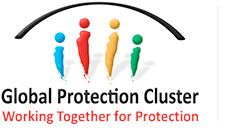HUMAN RIGHTS ENGAGEMENT
Why is human rights engagement important?
Protection clusters are already collecting a large amount of information related to issues affecting IDPs, but these protection issues may not be analyzed using the human rights framework and tools where relevant. The lack of complementarity with and connections to the human rights framework, tools and mechanisms, may constrain protection clusters’ ability to leverage them for the benefit of IDPs and lead to duplication of reporting templates, tools and analysis. The protection clusters can achieve further predictability and encourage positive developments in the protection of internally displaced persons by strengthening its monitoring framework and protection monitoring systems in line with the human rights framework. This includes ensuring more systematic integration of the human rights mechanisms in the protection analysis and planning activities of field clusters and in support to the HCT protection strategies. The GPC and field protection clusters also work towards closing this gap by raising awareness and equipping protection officers, protection cluster members and Humanitarian Country Team members with the tools and information needed to make better use of the human rights system for the benefit of IDPs.
Key areas of focus of the Task Team on Human Rights Engagement
Integrate human rights in planning activities at field protection clusters level:
- Strengthen clusters’ awareness of resources available and their capacity to utilise them more effectively.
Use human rights tools to better monitor the respect for the human rights of IDPs:
- Ensure inclusion of human rights monitoring reporting within the protection monitoring system, where relevant so as to facilitate reporting at field level.
- Put in place a toolkit of human rights related indicators relevant to the protection clusters in the field.
Use human rights mechanisms to raise awareness and advocate on behalf of the rights of IDPs:
- Enhance the guidance to field protection cluster on relevant factors to consider when deciding whether to contribute to a mechanism.
- Reinforce monitoring and contributions to thematic processes and initiatives in the context of Human Rights Council resolutions, Treaty Body General Comments/Recommendations and the work of the Special Procedures mandate holders, so as to ensure continued visibility of internal displacement in these processes.
- Step up advocacy at Geneva level towards UN human rights mechanisms, including jointly with key counterparts and at the diplomatic level, in support to strengthen advocacy in the field.
- Strengthen the strategic thinking process around the use of the human rights mechanisms, both in identifying the protection issues that could usefully be raised with the mechanism in question and, simultaneously, planning how any consequent recommendations could be integrated into existing advocacy efforts or in new initiatives.
- Devise and pilot targeted human rights interventions in specific country operations/contexts.
Follow-up on human rights engagement on behalf of IDPs:
- Routinely evaluate the protection dividends of human rights engagement within a broader protection strategy and HCT protection strategy.
Exchange knowledge and good practices with regard to the use of human rights
- Create a good practice portal (linked to or independent from the existing UNHCR human rights community of practice) that protection clusters would use to offer and learn from good examples of successful engagement with the human rights mechanisms.
